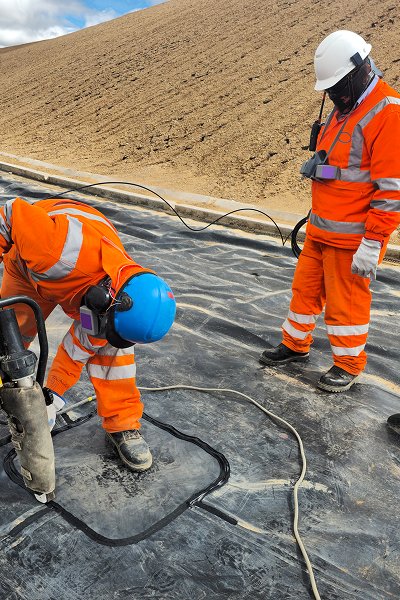Biaxial Geogrid is a geosynthetic material with a regular grid structure, which is made of high polymer materials (such as polypropylene PP, polyethylene HDPE, etc.) through a longitudinal and transverse bidirectional stretching process. Its notable feature is that it has high tensile strength in both the longitudinal and transverse directions, which can effectively disperse and transfer the load in the soil and enhance the stability of the overall structure.

Core features include:
High biaxial tensile strength: suitable for foundation reinforcement projects that bear multi-directional stress;
Regular grid and strong nodules: conducive to interlocking with soil particles to prevent fill slip;
High stiffness and low elongation: can effectively limit foundation deformation and improve bearing capacity;
Corrosion resistance and aging resistance: adapt to various environmental conditions and have a long service life.
Performance advantages of Biaxial Geogrid
Bidirectional high tensile strength; high tensile strength in both longitudinal and transverse directions, can effectively disperse and transfer loads in the foundation or structure, enhance overall stability, and is particularly suitable for engineering projects subject to multi-directional stress.
Improve foundation bearing capacity; the grid structure forms an interlocking effect with soil particles, effectively limiting the lateral displacement of the soil, forming a "reinforcement effect", significantly improving the bearing capacity of the foundation, and reducing settlement and uneven settlement.
High stiffness and low elongation; bidirectional geogrids have greater stiffness and less elongation, and can provide strong support at the initial stage of force, which is suitable for projects that require immediate stability, such as soft soil roadbed treatment or slope stabilization.
Corrosion and aging resistance; polymer materials such as polypropylene or high-density polyethylene, bidirectional grids have good acid and alkali resistance, salt resistance and anti-microbial erosion resistance, and can be used in various complex soil and groundwater environments, especially for special environments such as ports, coasts, and landfills.
Anti-ultraviolet and long service life: Geogrids with anti-UV stabilizers have excellent anti-ultraviolet performance and are suitable for long-term exposure to sunlight without aging, thus extending the life of the project.
How to choose the right Biaxial Geogrid ?
Select according to tensile strength grade
Bidirectional geogrids are usually divided into different tensile strength grades, such as: 15kN/m, 30kN/m, 50kN/m, etc.
Select according to construction environment conditions
High humidity and corrosive media: Choose HDPE material, which is corrosion-resistant and aging-resistant
Long exposure or exposure time: Choose products with anti-UV agent
Areas with large temperature difference: Choose products with excellent resistance to thermal expansion and contraction
Select according to mesh size
The mesh should match the particle size of the filler used to ensure good interlocking effect;
Too small particle size → too large mesh will lose the reinforcement effect
Large particle size → too small mesh will affect soil penetration and bonding
Check product certification and test report
Whether it complies with national standards (such as GB/T 17689-2008) or international standards (such as ASTM D6637)
Whether the supplier provides:
Factory certificate
Product performance test report
Construction technical guidance instructions
Biaxial Geogrid is a high-performance geosynthetic material with high bidirectional tensile strength, good structural stability, convenient construction, corrosion resistance and aging resistance. It has been widely used in multiple engineering fields such as roads, railways, dams, slopes, ports and landfills.
It can effectively improve the bearing capacity of the foundation, reduce settlement deformation, extend the life of the structure, reduce construction costs, and improve the overall economic benefits of the project. Through reasonable selection, standardized construction and scientific management, bidirectional geogrid will continue to play an important role in infrastructure construction and become one of the key materials for achieving engineering quality and sustainable development.


